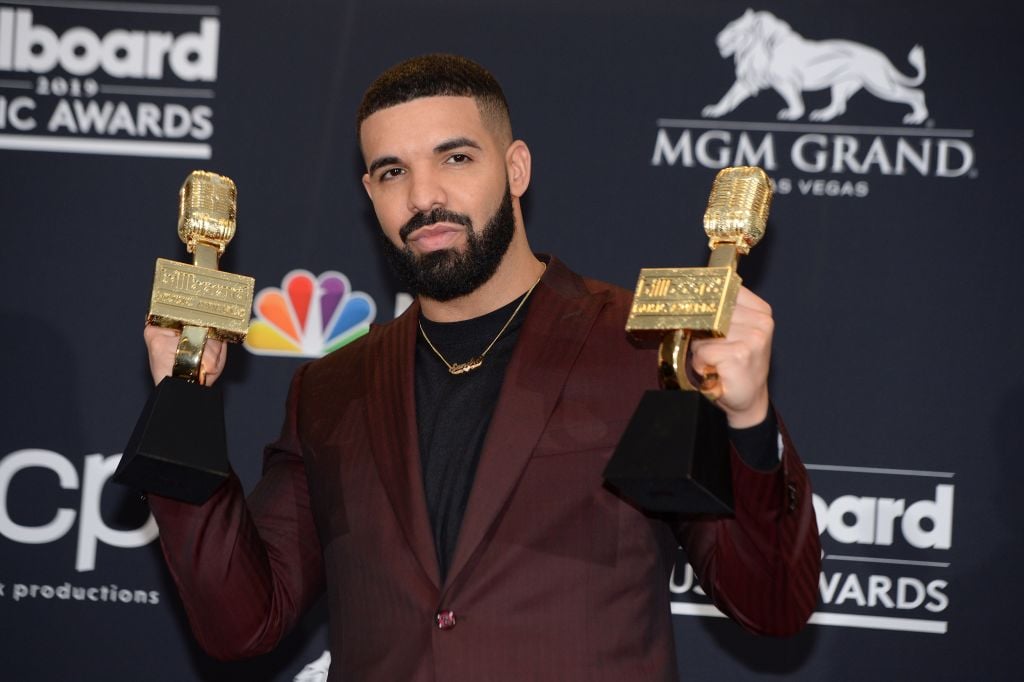Have you ever ever puzzled what your rights are as an artist? There’s no clear-cut textbook to seek the advice of—however we’re right here to assist. Katarina Feder, a vp at Artists Rights Society, is answering questions of all kinds about what sort of management artists have—and don’t have—over their work.
Do you could have a question of your personal? E-mail [email protected] and it could get answered in an upcoming article.
I’m an artwork advisor who has commissioned an artist to provide a one-time wall overlaying for a business constructing. We initially supposed for the pictures to be easy vector drawings illustrating facilities throughout the constructing. The imagery is so recent and energetic that we expanded the thought to incorporate referential imagery from town. This consists of photographs of two works of public artwork. Do I have to request permission from the artist/gallery/property? The work won’t be resold or printed.
It’s clear from the content material of your query that you simply respect public artwork. Butwhen a murals is public, it doesn’t imply it’s within the public area. Public artwork is like every other type of artwork, and the copyright for it rests with the artist till 70 years after their demise (until it’s signed away).
There may be an exception value noting: part 120 of the copyright legislation permits “pictorial illustration” of an “architectural work that has been constructed” so long as the work is in an “atypical and visual place.” Photos of those works could be made and distributed without having to acquire permission. However this rule solely applies to architectural works. It says nothing a couple of mural, as an illustration, which may be painted on the aspect of one in every of these facades.
When an artist incorporates different mental property into her personal, it’s generally called appropriation. That is straightforward to understand once we think about individuals like Andy Warhol and Richard Prince, who take the murderous byproducts of capitalism (salt-flavored soup, cigarettes) and make artwork from them. However such borrowing can be allowed with different artistic endeavors. Greats like Sherrie Levine and Sturtevant made their careers pushing again towards the terrifying masculinity of artwork historical past by remaking works and altering little about them. And who might neglect Marcel Duchamp’s L.H.O.O.Q. (1919), which is simply the Mona Lisa with a mustache and a doubtful praise?
On the subject of depicting different artworks, there’s little one other artist can’t do. This additionally implies that artists are typically given better liberty relating to the usage of public works in their very own artwork. Take, for instance, the 2013 case, Derek Seltzer v. Inexperienced Day Corp. A poster of Seltzer’s work, Scream Icon, was on a wall in Los Angeles and was included as a backdrop in a video throughout a Inexperienced Day live performance. Though Seltzer believed his rights have been being infringed upon, the court docket dominated in Inexperienced Day’s favor by affirming that the usage of the picture was transformative. In line with the ruling, “The video backdrop utilizing ‘Scream Icon’ conveys new data, new aesthetics, new insights and understandings which might be plainly distinct from the unique piece.”
The motivation behind an appropriation is sort of necessary when a decide considers copyright infringement. Despite the fact that an artist will creat your mural, it’s the actual property firm that commissioned the work, and from that standpoint you might be uncovered. I’d attain out to the artists whose works you’ve appropriated, or their estates, to chop them in on the deal.

Photograph by Patrick Lux/Getty Pictures.
I’ve a brand new set up undertaking I’m about to start out. It can contain an animated 3D projected picture that shall be programmed within the acceptable software program. I shall be hiring a programmer/designer as a contractor to construct the pictures/information. Because of the pandemic, we shall be distant and the work shall be produced on his pc. Will he have any proper or declare to half or complete of the work based mostly on my designs? If not, how do I defend and guarantee possession and bodily possession of all of the associated information, photographs to be produced?
Your set up sounds thrilling and complicated however the resolution is easy and boring: contracts! You already describe your designer as a contractor, so it shouldn’t be any hassle to enshrine your standing because the work’s sole writer in your contract.
The collaborative type of work you’re describing is pretty widespread within the fashionable age. Artwork as we speak can contain groups of robotics engineers, digital actuality programmers, and toga-clad guardians named Romeo. Certainly, the organizers of the just lately opened Documenta 15 want ephemeral artwork that captures the fantastic thing about a neighborhood coming collectively to hash out concepts, relatively than bodily artwork that credited to a single particular person.
However whether or not you’re Jeff Koons or a Jakarta-based group of hippies, it’s necessary to have a frank and open dialogue about whose title will seem on the undertaking earlier than any work is finished. Copyright safety is one thing that’s rewarded robotically when a piece is created, and when you don’t have your settlement labored out beforehand, there’s an opportunity it’d go to your collaborator as properly.
What you actually need is a “work for rent” association, the type that has prevented the historic artists and writers of Marvel Comics to carve out a bigger share for themselves as ever extra obscure heroes are dropped at the massive display screen. Two months in the past, somebody wrote into this column as a result of her good friend thought he ought to obtain credit score for a sculpture that he fabricated for a significant artist. It’s best to learn my full reply right here as a result of it’s relevant to your query however my reply was, in so many phrases, “Sorry man. You bought paid in your contribution. Now the credit score for the work lies with the artist who employed you to help.”

US rapper Drake poses within the press room through the 2019 Billboard Music Awards on the MGM Grand Backyard Enviornment on Could 1, 2019, in Las Vegas, Nevada. (Photograph by Bridget BENNETT / AFP) (Photograph credit score ought to learn BRIDGET BENNETT/AFP by way of Getty Pictures)
I like that Drake has new merch out that includes the work of British artist Richie Culver. It’s clear that our man from the 6 has a deep love for visible artwork—in spite of everything, the video for “Hotline Bling” was kind of set in a James Turrell! Nonetheless, I’m curious as to why Drake is ready to borrow from visible artists so freely. Can any recording artist do that?
To begin with, Drake’s latest file is extra of a dance album, so get your genres straight! And no, neither Drake nor every other artist can borrow visible artwork freely. Though, as we noticed within the instance of Derek Seltzer v. Inexperienced Day Corp, courts do discover exceptions and at occasions rule in truthful use. Isn’t the complicated world of copyright enjoyable?
Within the case of Drake’s merchandise assortment, your sixth sense for copyright infringement most likely perked up as a result of the gathering contains a portray by Richie Culver (it reads, “Enormous fan of your previous stuff”) overlaid atop Drake’s older album covers. It’s a intelligent mashup, however based mostly on the Artnet Information article you shared, it appears like an above-board collaboration between the 2 artists. The article implies that Drake obtained permission to breed Culver’s work on this capability as a result of his file label reached out to the gallery that represents Culver, and Culver is even quoted saying that he was flattered when Drake contacted him. This leads me to consider that every one copyright permissions have been cleared and that Culver was compensated. Had he not been, Culver would have been properly inside his rights to hunt compensation and even to request that the infringing materials be recalled.
The music video for “Hotline Bling,” then again, was under no circumstances a collaboration between Drake and James Turrell, regardless that it definitely seems like one. When it got here out, I keep in mind being struck by the scene that contains a staircase resulting in a skylight, as a result of it so clearly resembles the one in Turrell’s monumental earthwork, Roden Crater. That being mentioned, what is perhaps most stunning about that incident is that Turrell himself responded to the similarities between his work and “Hotline Bling” by saying that whereas he was “really flattered to study that Drake f—s with me,” he wished to emphasize that he had no position within the video.
Certainly some musicians have paid homage to visible artists in methods which have been, shall we embrace, much less clearly celebrated than Drake’s. Bear in mind Beyoncé’s music movies for Lemonade, which took inspiration each from Pipilotti Rist’s 1997 video “Ever is Over All” and Julie Sprint’s 1991 movie Daughters of the Mud? There was initially a little bit of an argument over whether or not the singer gave sufficient quotation for her sources, although each the video work and the movie noticed a revival of recognition that couldn’t have left both artist feeling too unhealthy about it.
Beyoncé’s husband Jay-Z didn’t get off really easy. Marina Abramović claimed Jay Z “used her” in what was presupposed to be a collaboration on his Picasso Child: A Efficiency Artwork Movie, a music video that took inspiration from her celebrity efficiency at MoMA, The Artist is Current (2010)—although apparently her irritation was simply the results of a misunderstanding. Jay-Z had given to her basis, as agreed upon beforehand. Abramović had simply not been instructed.

College students play soccer with the Ohio Stadium within the background. (Photograph by Stephen Zenner/SOPA Pictures/LightRocket by way of Getty Pictures)
I learn just lately that Ohio State College trademarked the phrase “the.” Does that imply I’ve to cease utilizing it within the titles for my work? (“The titles for my work?” Oh, no, can I be sued for this query?) Significantly although, what are the foundations now?
Did Gwyenth Paltrow fear that Steve Jobs was going to sue her when she named her daughter Apple? Did Mark Zuckerberg need individuals to name the fronts of their heads one thing totally different when he trademarked the phrase “face?” Regardless of his trademark, has anybody in addition to Man Fieri ever used the phrase “taste city?” The reply to all these questions is not any, with the caveat that I wouldn’t put one thing like that previous Zuckerberg.
Copyrights are about defending concepts, however emblems are way more about model authenticity, and due to this fact are usually very context particular. That’s why you may have H.G. Wells’ The Time Machine and its related Hollywood variations and Apple’s Time Machine characteristic on its computer systems. Each are trademarked. Apple’s prolific trademarking is a reasonably good instance of how the phrases have to be utilized in a selected context. Chicago is one in every of their fonts, sure, however the Windy Metropolis is protected from the lawsuits, as is the musical. This sector specificity is, in fact, why the names for brand spanking new pharmaceuticals hold getting an increasing number of ridiculous: it’s a slim class and drug corporations have been trademark squatting on potential new names for many years.
Nevertheless it’s not like courts need to make issues troublesome for potential rivals. This LegalZoom article, for instance, explains why Yves Saint Laurent was capable of make its personal crimson soled footwear, regardless of the look being trademarked by Christian Loubitin: “Underneath U.S. trademark legal guidelines, the courts won’t acknowledge a mark that places rivals at a ‘vital non-reputation-related drawback.’”
“The” is the most typical phrase in English and Ohio State was motivated to file its software as a result of Marc Jacobs first filed an identical one, having for some years bought “The Tote Bag” and “The Backpack.” (The corporate additionally staged photograph shoots the place fashions wore sweaters that spelled out these three magic letters.)
The “the” in Ohio State College is equally very important to the branding of the varsity’s sports activities groups. In the event you go to the varsity, or like what their college students do with inflated balls, you’d by no means even think about calling it “Ohio State” or OSU. The “the” is essential because it distinguishes it from Oregon and Oklahoma. The “the” was even featured in a Saturday Evening Stay sketch. The New York Occasions, for its half known as, the “the” follow “nauseatingly pompous” to the varsity’s rivalsBut because the Occasions story factors out, the trademark is restricted to attire that’s bought by means of “channels customary to the sector of sports activities and collegiate athletics” So until you intend on making athletic shorts with the phrase “the” on the behind, I believe you’ll be okay.
Comply with Artnet Information on Fb:
Need to keep forward of the artwork world? Subscribe to our publication to get the breaking information, eye-opening interviews, and incisive important takes that drive the dialog ahead.


